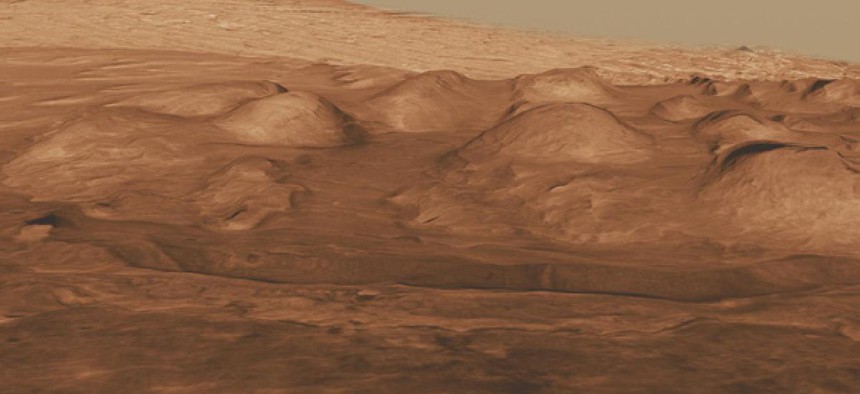Video: If there were life on Mars, curiosity wouldn't find it

The Gale Crater shows layers of rock that preserve a record of environments on Mars. NASA
In a video from NASA, scientists describe what the rover will be looking for when it arrives on the red planet.
"Curiosity is not a life detection mission," says John Grotzinger, a project scientist for NASA's Curiosity mission. "We're not actually looking for life; we don't have the ability to detect life if it was there." Instead, as he and Ashwin Vasavada discuss in the video above, Curiosity is a "robotic geochemist" that is looking for "the ingredients of life" -- water and carbon that could have once supported micro-organisms.
But Grotzinger continues, "The reason it's important to have this capability is this brings us back to the question of how to address the question and search for habitable environments again." So even if Curiosity can't find life, the point is still ... life. And that gets at the animating principle that lies at the heart space exploration and Mars study in particular: Sure, there is something scientifically valuable about understanding Martian geology and chemistry on their own merits, but, really, at the end of the day, what we want to know, what we are asking, is whether there is anyone else out there. How rare is this thing, life, that we have here on Earth? And so we send robots to far-off rocks in the hopes of knowing, maybe, just a little more about ourselves.


